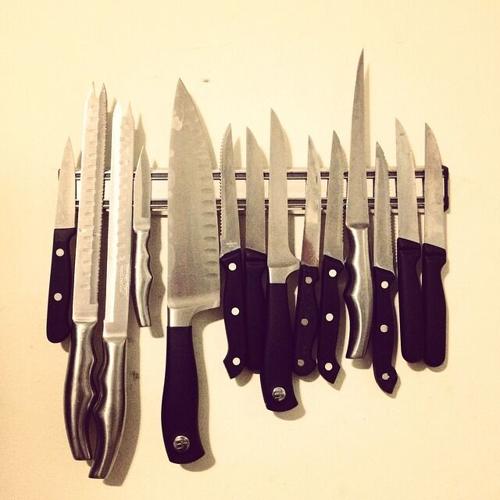
If you ask celebrity chefs an essential tool in their kitchens, all of them will give you the same answer – knives. Indeed, regardless of the type of cuisine and unique techniques, a good set of knives is something no chef can imagine in his or her job. As nowadays, people start to cook more at home, the great bulk of newly-minted pros think of replenishing their current collections and looking for a quality knife intended to take their culinary skills to the next level.
If you are one of those who have been in search of their perfect match, you have come to the right place – this article is chock-full of precious info on how to find great knives for your kitchen and become a gourmet chef.
Amazing Trio
It is common knowledge that quality knives are far from being cheap, but the great news is you need just three sharp helpers. Despite all those hefty sets available in the market, to be a culinary artist, it is enough to have a winning trio: a chef's knife, a paring knife, and a serrated knife. Experts explain that it doesn't matter whether someone wants a collection of the best Japanese knife or a classic French-style model; the market offers a wide choice of great all-rounders. Even celebrity chefs do not have more types, sizes, and shapes, and they all agree that the three items mentioned above are an ideal match for most households.
Needless to say, if you want your knives to serve the purpose, you have to look for high-quality products - cheap versions can't offer you more than an eye-catching look and resemblance to one of the globally renowned brands. Even if such products are sharp initially, they become dull at lightning speed, and there is no chance to make them sharp again.
Knowing the specific purpose of your knives can greatly assist you in selecting the best ones for your kitchen. For instance, a butcher's knife is perfect for cutting meat, but it proves to be useless when you want to slice bread or cakes. If you want a piece that serves multiple purposes, it's smarter to look for the best ulu knife on the market. These tools are perfect for dicing, mincing, and chopping meat and vegetables, as well as cutting fish bones.
The Right Material
Stainless steel and high-carbon steel are the most common materials used to make quality knives. Still, most experts share the opinion that the combination of the two is what makes both a durable and easy-to-care knife. Of course, some ceramic knives can also be the right choice, especially if you are on a tight budget and like vivid colors. In addition to that, ceramic knives are the only type you can put in the dishwasher, a no-no for all other types of knives.
While carbon steel is considered a much harder variety than stainless steel, it is more complicated because it is prone to rust. Anyway, if you want to give carbon steel a try, look for the acronym HRC on the edge of the blade. The figures you see next to the letters give you an idea about a knife's hardness; for best performance, look for the 40-50 range.
The Right Weight
Such a thing as the universally right weight doesn't exist or, it is better to say, the right weight depends on the user's individual preferences. Speaking in general, your constitution and your hand's size are in direct correlation with the weight of the knife. In this case, there is no one-size-fits-all solution, and the only viable way to figure out whether you are comfortable with a particular knife or not is to feel it in your hand.

That might be a problem when shopping online without having previous experience with the same brand and similar types of knives. The best solution here is to set aside enough time and check out trustworthy reviews, as well as comments of people who have already bought the knife you are plotting to order.
Forged Vs. Stamped
We bet you have noticed that not all knives are the same regarding how their blades are constructed. Some are made from one piece of steel that goes all the way through the handle. At the same time, others have handles attached to the blade. The first description is of the forged knife, which is more robust because they are heat-treated, and of better quality than the stamped counterpart, probably why it is also more expensive.
When you decide on the type of knife you want to buy, check out all the options that fit your budget but do not forget that a quality knife is a lifetime investment. Less expensive products are made from cheaper materials and do not last long, while top-notch knives are designed to serve you for many years to come.




(0) comments
We welcome your comments
Log In
Post a comment as Guest
Keep it Clean. Please avoid obscene, vulgar, lewd, racist or sexually-oriented language.
PLEASE TURN OFF YOUR CAPS LOCK.
Don't Threaten. Threats of harming another person will not be tolerated.
Be Truthful. Don't knowingly lie about anyone or anything.
Be Nice. No racism, sexism or any sort of -ism that is degrading to another person.
Be Proactive. Use the 'Report' link on each comment to let us know of abusive posts.
Share with Us. We'd love to hear eyewitness accounts, the history behind an article.